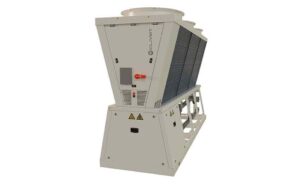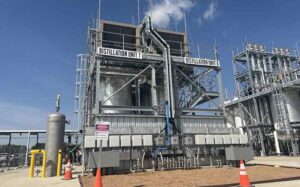Climaveneta and the “beautiful skyscraper”
3rd December 2014 ITALY: Climaveneta Integra heating and cooling units are a key element of Milan’s Bosco Verticale, dubbed the world’s most beautiful skyscraper.
ITALY: Climaveneta Integra heating and cooling units are a key element of Milan’s Bosco Verticale, dubbed the world’s most beautiful skyscraper.
Bosco Verticale (Vertical Forest) was opened in October in the Porta Nuova district of Milan as two residential towers, one 80m high and 19 floors, the other 112m and 27 floors. In addition to the total of 113 residences, the tower blocks also accommodate 800 trees between 3 and 9m tall, 11,000 perennials and ground covering plants and 5,000 shrubs – a total of more than 100 different species.
Last month, this prestigious building was selected from 800 other projects and unanimously nominated as the most beautiful skyscraper in the world by The Polytechnic University of Milan.
The International Highrise Award is held every two years and honours excellence in new buildings that stand a minimum of 100m tall.
The Bosco Verticale’s sustainable design has been carried forward into its air conditioning plant – four Climaveneta ERACS2-WQ 2152 hydronic Integra units. They are an evolution of the traditional reversible chillers with heat pump function that are able to produce cold and hot water at the same time. The main feature of the Climaveneta Integra units is that they independently maximise the efficiency of the energy cycle that generates the heating and cooling at all times of the year. In particular units get higher efficiency in spring and autumn, when there are more possibilities to have simultaneous cooling and heating requests.
To help maximise energy efficiency, the plant utilises water from underground aquifers with a constant temperature of 15°C all year round. The water is extracted from 12 underground wells and placed in a 350mm distribution ring that connects to the complete Porta Nuova development. “Energetically exhausted” water coming from each building flows in a network that discharges into the Martesana river.
Stream levels are monitored by a level sensor to avoid water discharge in case of river flooding. In this case the water is deviated to six wells that pump it back in the aquifer.







